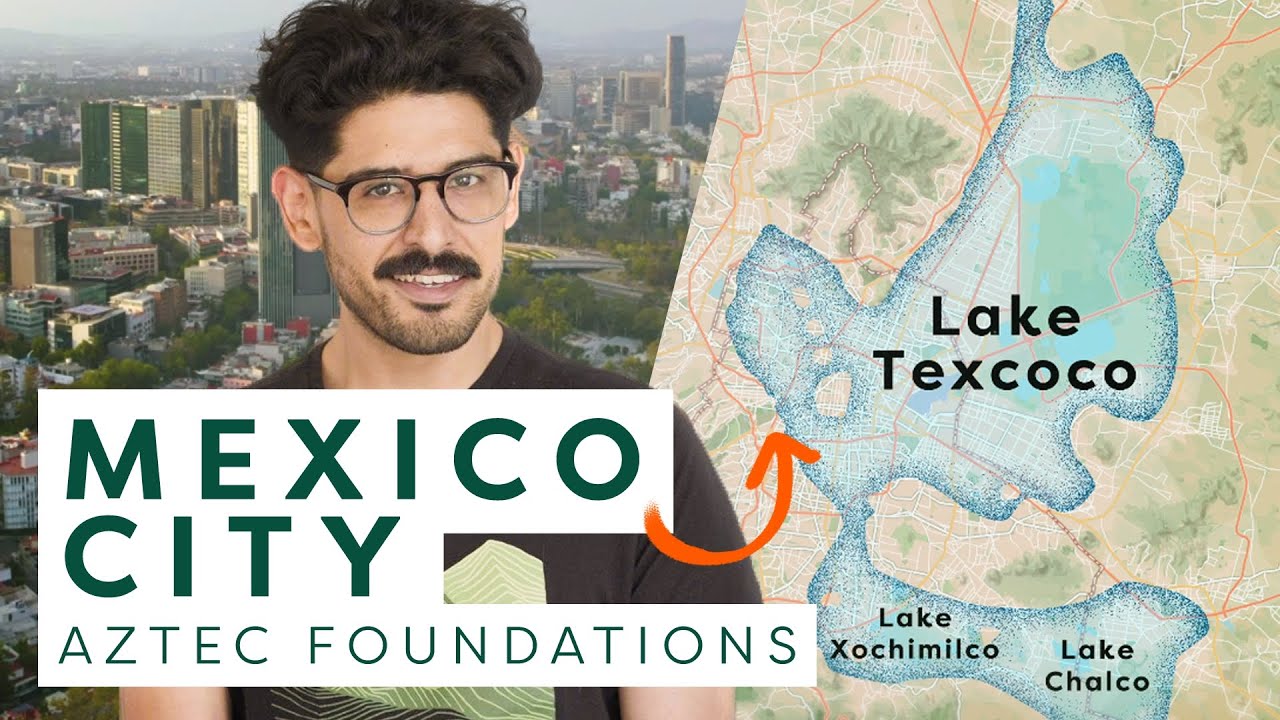The Air Pollution Challenge in Mexico City
Mexico City, a sprawling urban metropolis, is known for its rich history, vibrant culture, and breathtaking landscapes. However, it also faces a significant environmental challenge – air pollution. The city’s geographical location, nestled in a valley surrounded by mountains, naturally traps pollutants, exacerbating the problem. This issue is not only an environmental concern but also a public health crisis, affecting millions of residents and tourists alike.
Transportation and Emissions: One of the primary sources of air pollution in Mexico City is vehicle emissions. The city’s streets are flooded with cars, buses, and trucks, many of which are old and inefficient, emitting high levels of pollutants. Efforts to improve public transportation and encourage eco-friendly modes of transport are underway, aiming to reduce the reliance on private vehicles and, consequently, lower the emissions contributing to air pollution.
Industrial activity is another significant contributor to the air quality issues in Mexico City. Factories and power plants in and around the city release a variety of pollutants into the air. Regulations and reforms have been implemented to reduce industrial emissions, but the challenge persists, requiring ongoing efforts and innovations to achieve cleaner air.
Finally, the impact of air pollution on health and tourism is undeniable. Visitors to Mexico City may experience discomfort from the poor air quality, while long-term exposure poses serious health risks to residents. Efforts to monitor air quality and provide timely advisories are essential in protecting public health and ensuring a safe environment for both locals and tourists. Mexico City’s battle against air pollution is a complex issue, but with continued commitment and strategic initiatives, improvements in air quality can be realized, securing a healthier future for the city and its inhabitants.
Water Scarcity and Management Issues
Water scarcity and management issues are significant concerns in Mexico, affecting both locals and travelers alike. Amidst its diverse and vibrant landscapes, Mexico faces a paradox of water abundance in some areas and acute shortages in others. This disparity is largely due to geographical variations, where northern regions experience arid conditions and the south enjoys tropical climates. Yet, even in areas of apparent abundance, overexploitation and pollution of water resources pose a serious challenge. Effective water management practices are therefore essential not only for the country’s environmental sustainability but also for ensuring that communities and visitors have access to clean and safe water.
The impact of water scarcity on adventure travel in Mexico cannot be overstated. Areas popular for their natural beauty and outdoor activities, such as the deserts of the north and the cenotes of the Yucatan Peninsula, are under threat due to dwindling water supplies and contamination. This has led to restrictions on water usage and access in some destinations, potentially affecting the experience of travelers seeking to immerse themselves in Mexico’s natural wonders. Moreover, the quality of water available can significantly impact health, urging tourists to be cautious and informed about water consumption and safety measures during their journeys.
Efforts to address water scarcity and management in Mexico involve a combination of government initiatives and community-led projects aiming to promote sustainable practices and enhance water infrastructure. These include rainwater harvesting, wastewater treatment and recycling, and education campaigns about water conservation. For travelers, being aware of and respecting local water usage guidelines is a crucial part of responsible adventure travel. Furthermore, supporting eco-friendly tourism initiatives that contribute to the preservation of Mexico’s precious water resources can make a meaningful difference in combating these challenges.
Deforestation and Land Degradation
While exploring the rich and varied landscapes of Mexico, one cannot ignore the pressing issues of deforestation and land degradation that threaten the natural beauty and biodiversity of this country. These environmental challenges are not only a concern for the local flora and fauna but also have significant implications for the adventurous travelers seeking to immerse themselves in Mexico’s unique ecosystems.
Deforestation, the clearing or thinning of forests by humans, is prevalent in many parts of Mexico due to agricultural expansion, urban development, and illegal logging activities. This widespread deforestation is contributing to the loss of habitat for countless species, diminishing biodiversity, and disrupting the ecological balance. For travelers, this means the diminishment of Mexico’s lush forests, which are the backdrop of the country’s most breathtaking landscapes and outdoor adventures.
Land degradation, on the other hand, involves the decline in the quality of soil, vegetation, and water resources, often exacerbated by deforestation. This degradation not only affects the productivity of the land but also leads to more severe environmental issues such as soil erosion and decreased water quality. For those drawn to the natural beauty of Mexico, land degradation poses a threat to the pristine environments that make outdoor activities like hiking, bird watching, and ecotourism so fulfilling.
Efforts to combat these environmental issues are underway, with reforestation programs and sustainable land management practices being implemented in various parts of the country. These initiatives aim to restore degraded lands, conserve remaining forests, and promote a balance between development and environmental protection. For eco-conscious travelers, supporting these endeavors can be part of the adventure, contributing to the preservation of Mexico’s natural heritage while enjoying its wonders.
Understanding the challenges of deforestation and land degradation is crucial for responsible travel in Mexico. By being informed, travelers can make choices that support conservation efforts and help ensure that Mexico’s landscapes remain vibrant and accessible for generations to come. Whether through selecting eco-friendly tours, participating in reforestation projects, or simply spreading the word, every traveler can play a role in protecting Mexico’s environmental treasures.
Waste Management Challenges
Traveling and embarking on adventures in Mexico offers breathtaking experiences, from exploring ancient ruins to diving in the azure waters of the Caribbean. However, these adventures come with the responsibility of preserving the natural beauty and cultural heritage of the country. One significant challenge that impacts both the environment and the tourism industry in Mexico is waste management.
Infrastructure Limitations often make it difficult for rural and remote tourist destinations to handle the volume of waste generated. Many of these areas lack the necessary facilities to properly collect, separate, and dispose of waste. This can lead to improper waste disposal, contaminating the natural environment that attracts tourists in the first place. Initiatives to enhance waste management infrastructure are essential to protect these vulnerable areas and ensure they can continue to be enjoyed by future generations.
Furthermore, Plastic Pollution poses a severe threat to Mexico’s marine life and coastal regions, areas which are significant for both biodiversity and tourism. The overuse of single-use plastics by locals and tourists alike contributes to this issue. Efforts to mitigate plastic pollution include promoting the use of reusable items, implementing stricter regulations on plastic use, and encouraging recycling programs. Such measures are critical in safeguarding Mexico’s diverse ecosystems and maintaining the allure of its destinations for adventure seekers.
Impact of Climate Change
Climate change has emerged as a formidable challenge for countries worldwide, with Mexico facing its own set of unique challenges and consequences that significantly impact travel and adventure tourism. As this issue continues to evolve, understanding its effects is crucial for both travelers and the tourism industry at large.
Mexico’s diverse landscape, from its extensive coastlines to its majestic mountains and forests, makes it a premier destination for adventure seekers. However, the effects of climate change, including rising temperatures and unpredictable weather patterns, have begun to alter these natural wonders. Rising temperatures, for instance, have led to heatwaves that not only make outdoor activities uncomfortable but also pose health risks to travelers not accustomed to such extreme weather conditions.
Another significant impact of climate change on Mexico’s adventure tourism is the threat to its coastal regions. Rising sea levels and increased hurricane activity have put many of Mexico’s beautiful beaches at risk, affecting the integrity of marine ecosystems and, consequently, the experiences offered to travelers. Coral bleaching, a direct result of warmer ocean temperatures, has also diminished the once-vibrant underwater landscapes that attract divers from around the world.
Inland, the story is no different. The altering weather patterns have led to both extreme droughts and severe flooding in various parts of the country, affecting the availability and accessibility of many natural attractions. Adventure activities such as whitewater rafting and trekking are directly impacted by these changes, with altered river flows and unpredictable trails posing challenges to both operators and visitors.
Understanding the impact of climate change on Mexico’s unique natural attractions is essential for ensuring sustainable travel and adventure experiences. While the situation presents challenges, it also offers an opportunity for the adoption of sustainable practices that can help mitigate these effects, ensuring that Mexico remains a captivating destination for adventure travelers for generations to come.


